Inside Track: Bowers & Wilkins - Past, Present and Future

David Price interviews Andy Kerr from Bowers & Wilkins about the great British brand's past, present and future…
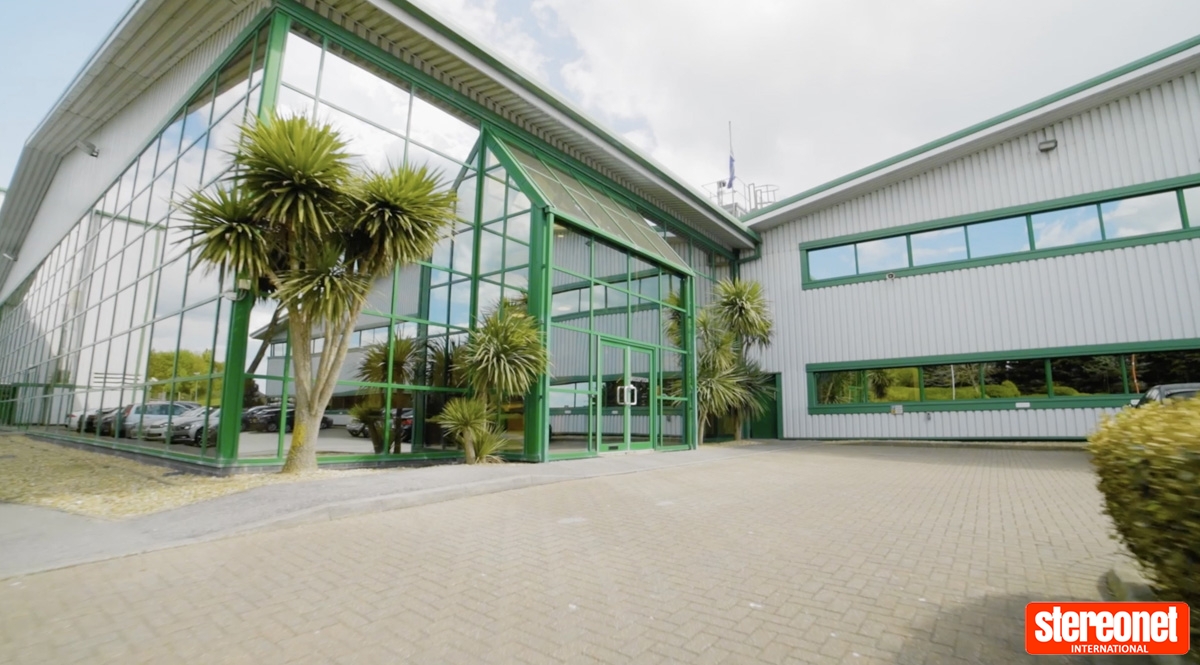
From the company's inception in 1966 right up to 2006, "Bowers & Wilkins was exclusively a loudspeaker company", says the company's Director of Product Marketing and Communications, Andy Kerr. "We produced a range of different models at different price points, all inspired by the reference 800 Series, which we introduced as a single model, the 801, in 1979. Over time, our portfolio expanded into a series of different product categories, such as compact 5.1 systems or installed or in-ceiling products. However, we were fundamentally still just about passive loudspeakers. But the launch of Zeppelin in 2007, he tells me, "changed everything – including how we think about ourselves."
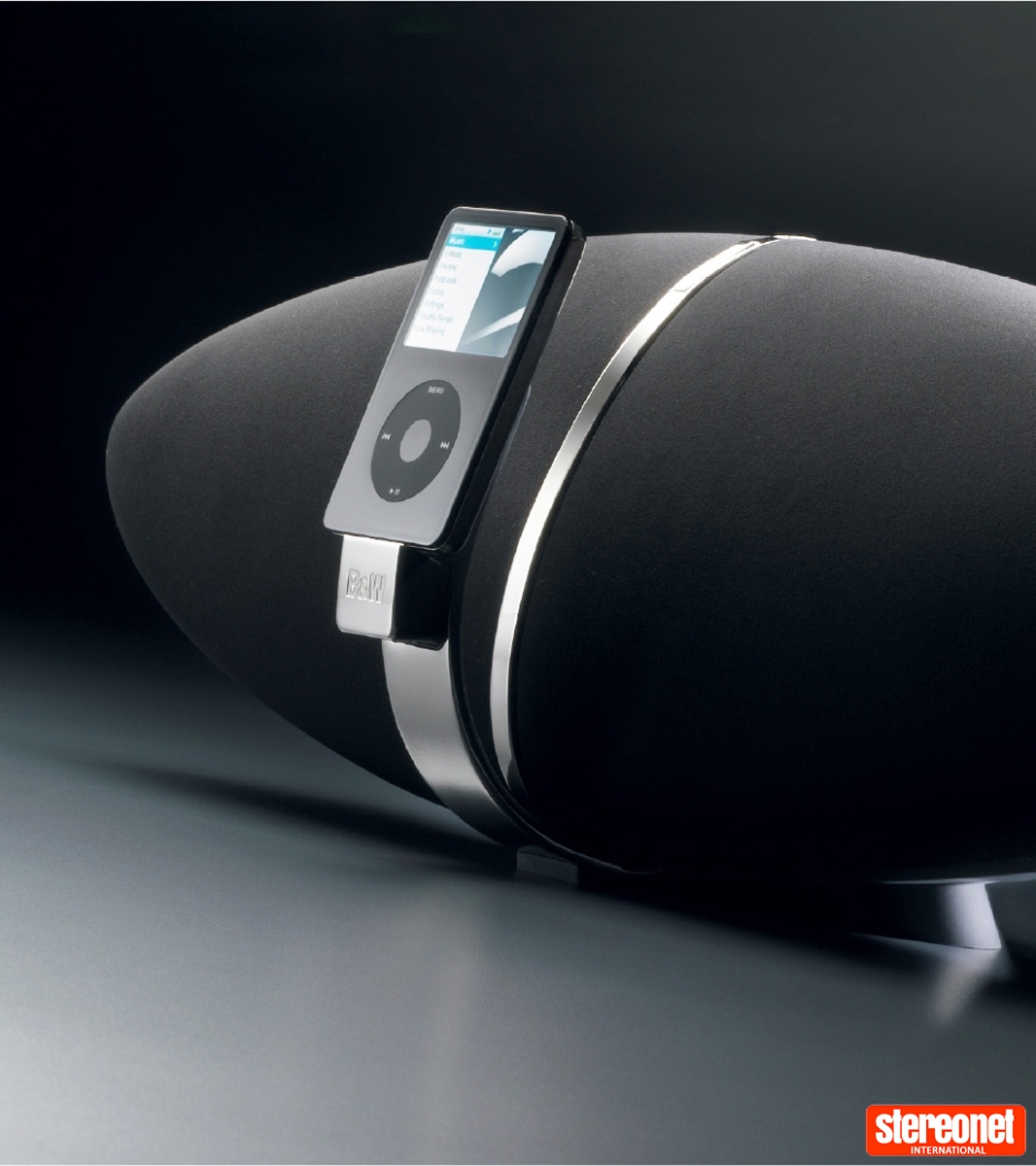
So began the new, second chapter of the Bowers & Wilkins story. At the time, it was big news, as potentially dramatic a new direction for an established and traditional business as Porsche's then-momentous decision to launch an SUV. Andy explains that:
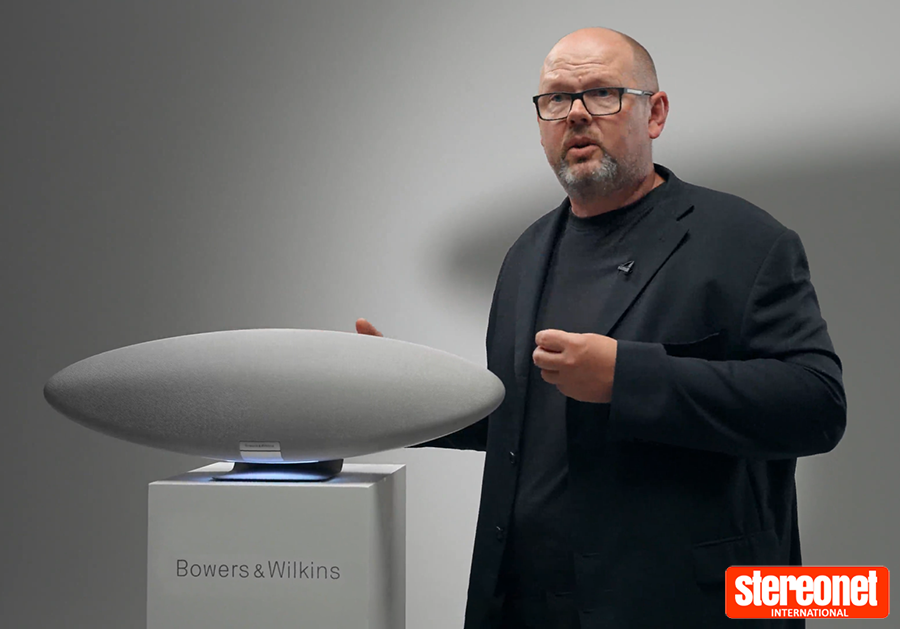
Andy Kerr, Director of Product Marketing and Communications, Bowers & Wilkins
"The initial breakthrough we established with Zeppelin quickly expanded outwards into a range of other products, including the Panorama soundbar, the MM-1 computer speakers and a series of different headphones, beginning with the P5s in 2010. Today, we try our best to make a range of premium products that suit the mobile listener, the automotive listener, the mainstream, non-specialist audio listener and obviously the more traditional, music loving passive speaker customer."
In other words, Bowers & Wilkins is no longer just a loudspeaker brand – today, it's an audio brand with claims to fame in multiple areas of the audio category. All the same, it's misleading to say that the company has abandoned its heritage in a bid to chase fashionable trends in consumer audio. Despite all this growth into new categories of product, the brand still produces its reference-quality loudspeakers in prodigious numbers, as evinced by the recently announced and highly impressive new 800 Series Diamond range. It's a tricky tightrope to walk, and Andy is well aware of this…

DO IT ALL
"With hi-fi, there's always a premium consumer prepared to pay a premium price, but with other categories, such as the headphones market, the situation is more challenging, because to some extent it's driven by what the customer is prepared to spend – so there's a delicate balancing act. To avoid any risk of diluting our brand equity, we make products that appeal to the top few percent of consumers in each category we enter. We try to give those customers reasons why they would value Bowers & Wilkins over other brands, so they learn that there's a premium value to what we offer. I can't say hand-on-heart that somebody buying a pair of PI7s today will one day become an 800 Series Diamond customer, but maybe we still pull that customer deeper into our brand by offering them other premium products, such as our Zeppelin or Panorama 3."
Bowers & Wilkins' strategy has been to keep all guns blazing in its specialist hi-fi market, whilst opening up a new front in premium consumer audio. The company has been careful and considered in how it does this. "We're definitely not shifting to making $99 novelty products", emphasises Andy. "The portables and/or headphone space is – to use that expression – 'a sea of same'", he adds. "There are hundreds of headphone brands, most of which are selling similar products. It's also fair to say that a few brands in the category are bigger and more well known around the world than we are. So how do we compete in the headphone market? If we just did the same thing, we'd disappear in that 'sea of same.' So we have to make a specific product that targets a certain type of customer, based on the following proposition: Why buy your headphones from another brand when you can buy them from the brand that makes the best loudspeakers in the world – and we'll show you how we do that?"
Andy talks in terms of presenting Bowers & Wilkins as a kind of consumer audio equivalent of a sommelier, someone with great knowledge and a highly skilled team. In truth, that's not how most consumer audio brands can sell themselves, I suppose. "We know full well that we can't directly compete with the juggernauts in the market in some regards, so we focus on a different approach. We certainly do our best on matters such as design, materials and user experience, because we think we're very good at that. But the one area we have the strongest chance in – we like to think, at least – is that we sound better."

The problem, I suggest, is that the company lacks the punching power of the major CE brands. "The aspiration for us is somewhat different", he explains. "A brand that just makes headphones has to drive the maximum profitability into that, but we don't necessarily. Instead, our aspiration is partially about money, but it's also about finding new customers for the brand and winning hearts and minds. We want people to want us. We want fans, not just consumers. It's all about quality rather that quantity."
Andy says that Bowers & Wilkins has "zero interest" in making millions of pairs of $50 headphones; instead, the company wants to be seen to be up there with the best in the premium part of the market. This generates a halo effect that will take people on to the company's other audio products one way or another. It's not a "loss leader" approach, but it's certainly true that Bowers & Wilkins is thinking strategically and longer-term.
"We want to be up there with the best in the headphone market, and the best in the wider audio market in general. For example, the reason why this company insisted on developing its own wireless transmission platform for the Formation products, rather than using something off the shelf, was because we felt that none of the others sounded good enough for our needs."

HOME AND AWAY
Bowers & Wilkins' transition from the first to the second chapter of its history began in 2007 when behind the scenes, things started moving fast. Whilst the corporate goings-on of a company won't interest everyone, it's important to remember the state of flux that the brand had been in until recently. Bowers & Wilkins' partnership with Eva Automation had not delivered the promised synergies. It was decided in early 2020 to separate Bowers & Wilkins out and place it under its own leadership team again. "This was headed up by Geoff Edwards," explains Andy, "who'd been one of our senior figures for twenty-five years, so very much a safe pair of hands. The plan was to allow Bowers & Wilkins to thrive and be successful in its core markets and not expand into the new spaces planned by Eva."
The company found stability again, and then an opportunity arose to join Sound United, the group that also owns Marantz, Denon, Polk and Definitive Technology, and by the end of 2020, Bowers & Wilkins had completed its move. "Going back a long time," says Andy, "the concern had always been that Bowers & Wilkins should retain its own identity if it ever was acquired, and the proposal that came from Sound United very much guaranteed that."
The worry for some fans of Bowers & Wilkins is that it's going to start doing too much parts sharing – the 'Morris Marina door handles on a Range Rover' scenario that older readers will remember from nineteen seventies British Leyland cars, for example. Andy is emphatic that this is not going to happen. "Things are being kept separate, so you're not going to see anything other than a Bowers & Wilkins drive unit turn up in a Bowers & Wilkins loudspeaker. There are certainly plenty of sensible synergies with other brands in the group – things like bulk buying of digital-to-analogue converters, things like that, because Denon and Marantz, as such premium entities in their category, tend to get access to the best stuff first. So I think we've emerged in a better place. We're not chasing rainbows; we're looking to grow strongly and successfully in our category. We're back on track."

"Bowers & Wilkins is investing in new talent, and has been recruiting for quite some time, for new engineers to come and work in the dedicated engineering research centre in Southwater. We're investing in new talent, and one obvious example is in software. That was previously done exclusively by Eva, but now we've got our own substantial and rapidly expanding team that's developing our new app experiences. For example, the new Bowers & Wilkins Music app has been in place now for a while and has garnered lots of positive comments, and it's getting better…"
He continues: "While the last 800 Series – the D3 – set new records for production in the Dale Road factory in Worthing, the new D4 is already running at twenty percent higher production and likely to go higher still. This reflects that more people want them than ever. Making so much of the 800 Series Diamond in the UK now, has helped us during this supply shortage, too. So I think it's fair to say that we're doing okay with our core specialist speaker business."

SOUND INVESTMENTS
The tumultuous politics that the world is currently undergoing, along with the recent pandemic, have focused minds at Bowers & Wilkins. From the credit crunch of 2008 onwards, the company has started 'in-sourcing' production where necessary or expedient. Like many loudspeaker manufacturers, it continues to make the bulk of its products in China; in this case, at the company's own Zhuhai factory. This makes commercial sense, not least because Bowers & Wilkins products emerge in the part of the world that's currently growing the fastest. At the same time, however, it has been trenchant in its support of the flagship 800 Series Diamond flagship being designed and built in the UK.
"The major substantial component parts that go into the making of the 800 Series Diamond, including the high frequency, midrange and low frequency cones are all UK and European sourced", explains Andy. "Cabinet production was done previously by a company called Ludwigsen in Denmark, a specialist furniture manufacturer. We didn't want to have 'risk to build', so we bought it all in-house – that was the reason for taking over the manufacture of 800 Series cabinets, nothing to do with concerns around quality. After the cabinet, the largest, heaviest component in an 800 Series Diamond model is the head – it's 18kg of aluminium that you don't want to deliver by a boat or plane, unless you really have to. So we source this from a UK company as well."
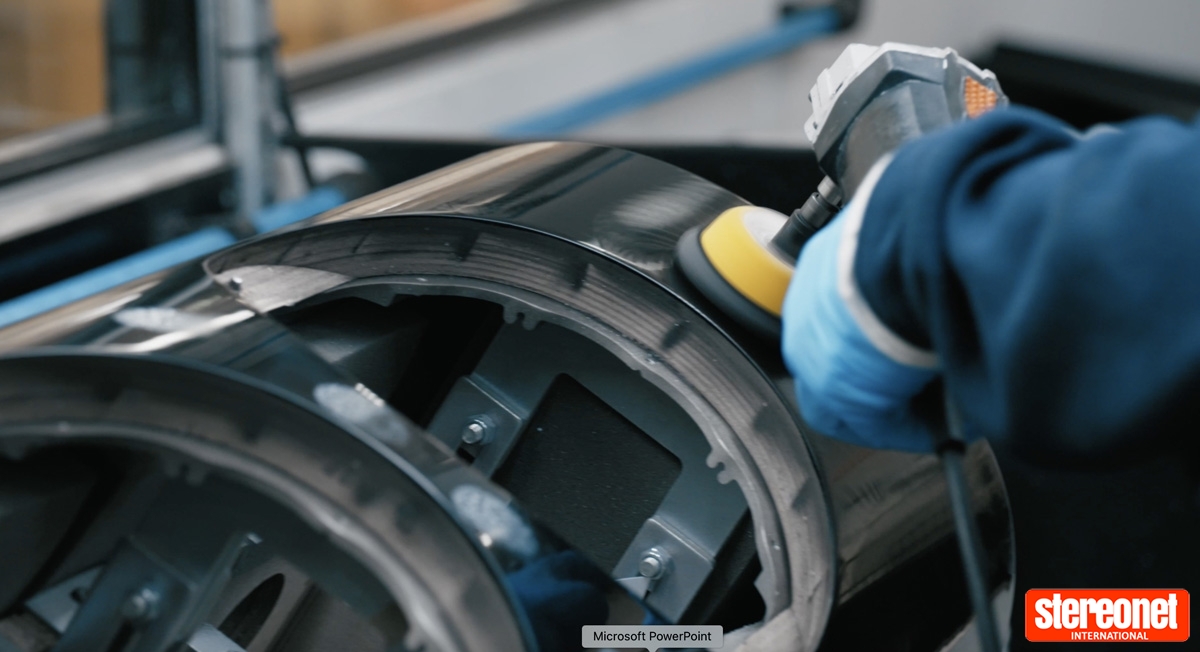
"We make the midrange cone on site, and it's shipped overseas to go into the 700s and 600s from the UK to our Zhuhai factory, so we have control over the process. The Diamond Dome is produced in the UK in Ascot, although it's our intellectual property. So most of the bits that go into the 800 Series Diamond are from some form of UK or European supplier. There are some things that make more sense from a quality point of view to import – things like the pods around the bass cones come from a Chinese supplier because that supplier is excellent at doing it. All the same, it's frankly more efficient and safer from the point of intellectual property not to have someone else make it for you, and for you to make it yourself."
Andy says that the company takes full advantage of its relative size in the specialist hi-fi sector. "The factory at Dale Road is one of the largest manufacturers of high end loudspeakers in the world. 800 Series Diamonds as far as we are aware are probably around fifty percent of the global premium performance speaker market. Because we've got to a certain size, we have been able to invest in processes and tooling and methods of manufacture that allow you to do it consistently, but in quantity. Many of our competitors are nowhere near that. To the car industry we're more like Porsche, in a world where some hi-fi brands are more like Morgan. You can be confident that every speaker of the production run is built to exactly the same tolerances. I've never seen our standards of fit and finish as high as now, because we're constantly investing in new tooling, new processes and new machines. The accuracy of our woodcutting for our cabinets example is +/- 0.2mm, for example."
Much money has been spent on getting what Andy calls repeatable quality. "Much as we invest heavily in R&D, we also invest heavily in the methods of manufacture that support the endgame. There's something to be said for buying and owning something that will last you. I know people who've got Linn turntables or Naim amplifiers, for example, that are thirty years old and going strong. We in the audio sphere need to celebrate this, because there are so many consumer electronics products that don't last. We support and hold stock and spares for a period of ten years and beyond that we can fabricate new parts for you. All the passive products are warranted for five years, too. This is reflected in our very high residual values, which mean our speakers keep their value better than most."

GOOD TECHNOLOGY
Allied to the company's push for the best possible in-house build quality is its focus on technology to get better sound. One recent benefit of this is the Continuum cone, which to my ears, has brought about a major transformation of all higher-end Bowers & Wilkins speakers. "It is about as transparent a cone as we can make it, without having a flavour", says Andy. "COMSOL Multiphysics – the FEA package that we employ – has yielded dramatic results. It began revealing stuff that no one knew was there. We were already pretty good at laser measurement – laser interferometry – but getting to understand the accuracy of the data capture and then combining it with accurate simulation becomes a virtuous circle. You can measure, you can simulate, you can understand and then you can simulate again on the next iteration. Then look at how that works, then apply that back into measurements in your next model. In our modern designs, everything is simulated."
"With the 2010 D2 era of 800 Series, realistically probably only the Diamond Dome tweeter assembly was simulated, not much else. That was just a reflection of project timelines and processing capability being what it was back then: it would take three weeks to run simulations that today, we can do in three hours. So it's no surprise that now, everything is simulated. We've got understanding of the behaviour of uprights within the plinth, the plinth itself, the spikes on the plinth, how that whole system then couples to the base of the cabinet, how the cabinet then behaves at a whole range of different frequencies – all of which is audible. If the art of the speaker is to not sound like a 'speaker', then the more you can understand how the cabinet behaves, then the more successful you can be at making it sound less like a speaker. I think that's what we've got really good at over the past four or five years. Alongside the more transparent transducers we've developed, it's the mechanical structures where we've really moved the game on."
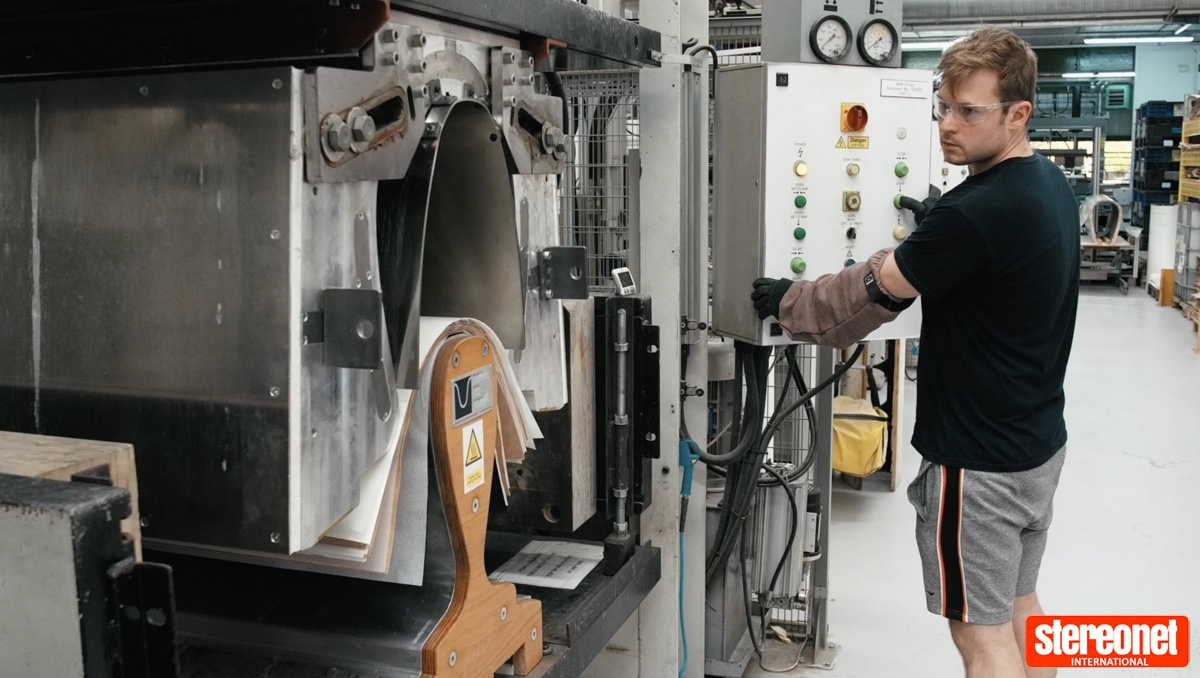
Another beneficiary of this major investment in technology is the new Biomimetic suspension in the midrange drivers, which actually started as a patent application in 2004, so it precedes the patent application for Continuum by a couple of years. That said, it has taken us longer to engineer, which in large part has been about finding the right materials. I think the Biomimetic suspension is one of those things that just makes you go, "oh yeah, why didn't we see that before?" To draw a parallel with the wider world, it was a "putting wheels on a suitcase" moment, like the moment where people suddenly no longer needed trolleys in airports because every suitcase came with its own wheels built-in. The new suspension is remarkable; the amount of noise it eliminates is ridiculous – it's 80dB quieter at 1kHz, and 25dB quieter at 4kHz. It will eventually make its way down into the 700 Series and then the 600 Series."
I have been to the Bowers & Wilkins R&D facility in Steyning (the famous Steyning Research Establishment, SRE) several times over the years. "We've now got a newer and much more substantial building in Southwater, which of course, is home to the new SRE – the Southwater Research Establishment," Andy tells me. "We have rapidly scaled up and invested heavily in the new space – we've got three full floating listening rooms, we've got an RF chamber, a very substantial anechoic chamber, a smaller anechoic chamber… it goes on. It represents a lot of investment to help us move forward."

That said, "You are only as good as the lens you look through. Today we're all feeling fairly confident that we've developed something pretty special with the latest generation of 800 Series Diamond, but in ten years' time we'll be looking back at it and saying "ah we missed that, we didn't see that". You know, people from the Middle Ages weren't idiots because they thought the world was flat, they just couldn't see beyond the horizon. Things just get better and smarter – you're only as good as what you can see, and there's always more to learn and improve upon. That's part of what makes it so exciting working here, of course – the knowledge that there's always going to be a better product just around the corner."
Andy is also excited by the company's use of materials. "We've traditionally worked with wood, but with other types of product such as the Formation products, there are some really interesting understandings that are coming out with different materials. One simple thing we discovered quite early is that wood is not great for wireless products – MDF gets in the way of the signal path. So the Formation Duo is made of UPM Formi (Polymer) because it works much better in terms of allowing signal through. There's a lot to learn on this, as products go increasingly active and wireless. Our younger generation have grown up in a world of single product connected-plug devices where everything's in it – and their expectation will be even more in the world of premium performance loudspeakers, they still expect everything to be in it because that's what they're used to."

Andy tells me that so long as there are people in the world who want to buy passive loudspeakers, amplifiers and cables, Bowers & Wilkins will continue to serve that customer. "There's no way we're going to stop doing it. But I think what we're experiencing in the speaker world right now is no different to what the car industry is experiencing with the steady transition, via hybrid, to full electric. The likelihood is that a twenty year-old who's grown up in a household with, say, Sonos, will find the concept of jumping from that kind of product to an amplifier, speakers and cables as somewhat unusual. What we have to do, if we still want to be relevant to that kind of customer, is deliver things that they will find as easy to live with as the products they had before, but at the same time offer the premium sound and design that we're renowned for. So it's got to be good, as well as easy to use – otherwise it's not us."
Bowers & Wilkins doesn't see wireless in quite the same negative terms as some hi-fi purists, and instead argues that it presents a chance to actually improve on imperfect aspects of wired systems. Andy says: "To the audiophile customer, the notion of wireless automatically connotes compromise. I would argue that until recently that was correct, but when you get to the perspective of wireless being executed properly, with minimal loss, then some of the inherent advantages in an active wireless product begin to appeal. Simple example, let's say you buy a pair of our passive loudspeakers. We've got no control of the amp you connect it to, no control over whether you wire it up in-or-out of phase, no control of whether one cable is one metre long and the other is 12 metres, whether one speaker's in a good position and the other isn't, and we've got no control of the source media you're playing. We have to rely on our dealers and journalists to show them how to set up the system, to provide them the appropriate level of advice to help them get to a good experience. That's fine, but there are some customers who don't have any time for any of that…"

"Instead," he says, "with a well sorted, well engineered active wireless product, we know exactly what the amplifier is because, well, it's inside the product. We know exactly what the signal path from the amplifier to the drive unit is going to be because we designed it, what the DAC is, etc. The whole thing becomes much more holistic. You get a guaranteed standard that is very difficult to get wrong. So we will be continuing to invest in scale in what we've done with wireless speakers, because we've developed our wireless platform. Expect to see more in that space – but like I said, it doesn't mean the 800 is going away, far from it."
IN THE END
Speaking personally, it is fascinating for me to have seen the evolution of Bowers & Wilkins. I have watched the company closely for the best part of thirty years, professionally, and things have gotten massively better. The latest D4 iteration of the 800 Series Diamond is a stark and dramatic improvement over the D2 range of just fifteen or so years ago. All the technology has trickled down to the lower ranges, making them conspicuously superior sounding too.

Also, unlike many manufacturers, the company's foray into consumer audio – with Zeppelins, headphones, automotive and active wireless speakers – has been successful. In an incredibly tough market, dominated by many much bigger players than Bowers & Wilkins, the company's name has prospered. It's fair to say that it hasn't changed the world, but it has ensured that many people who otherwise would have remained blissfully aware of 'real' specialist hi-fi are now in our loop. I can only wonder what the guys and girls from SRE have up their sleeves next?
For more information visit Bowers & Wilkins
David Price
David started his career in 1993 writing for Hi-Fi World and went on to edit the magazine for nearly a decade. He was then made Editor of Hi-Fi Choice and continued to freelance for it and Hi-Fi News until becoming StereoNET’s Editor-in-Chief.
Posted in: Hi-Fi | Headphones | Home Theatre | Industry
JOIN IN THE DISCUSSION
Want to share your opinion or get advice from other enthusiasts? Then head into the Message
Forums where thousands of other enthusiasts are communicating on a daily basis.
CLICK HERE FOR FREE MEMBERSHIP
Trending
applause awards
Each time StereoNET reviews a product, it is considered for an Applause Award. Winning one marks it out as a design of great quality and distinction – a special product in its class, on the grounds of either performance, value for money, or usually both.
Applause Awards are personally issued by StereoNET’s global Editor-in-Chief, David Price – who has over three decades of experience reviewing hi-fi products at the highest level – after consulting with our senior editorial team. They are not automatically given with all reviews, nor can manufacturers purchase them.
The StereoNET editorial team includes some of the world’s most experienced and respected hi-fi journalists with a vast wealth of knowledge. Some have edited popular English language hi-fi magazines, and others have been senior contributors to famous audio journals stretching back to the late 1970s. And we also employ professional IT and home theatre specialists who work at the cutting edge of today’s technology.
We believe that no other online hi-fi and home cinema resource offers such expert knowledge, so when StereoNET gives an Applause Award, it is a trustworthy hallmark of quality. Receiving such an award is the prerequisite to becoming eligible for our annual Product of the Year awards, awarded only to the finest designs in their respective categories. Buyers of hi-fi, home cinema, and headphones can be sure that a StereoNET Applause Award winner is worthy of your most serious attention.





